World War II Love Stories Read online
Page 2
ENIGMA CODE BREAKERS
Between the world wars, German scientists developed an Enigma machine that scrambled information with the use of three to five wheels. To decode messages, you needed to know the exact setting of these wheels. Top mathematicians at Bletchley Park working on Colossus, the world’s first programmable computer, managed to break the code that the Germans believed was unbreakable. They used the intelligence sparingly so that German high command didn’t realize the Enigma code had been broken, but it was especially useful in the fight against Rommel in North Africa and for destroying German U-boats that were targeting shipping in the North Atlantic to prevent supplies reaching Britain.
Some military historians estimate that decryption of German communiqués at Bletchley Park shortened the war by two years.
On December 16, 1944, the Germans launched a major counterattack, driving once again through the wooded mountains of the Ardennes in Belgium. Twenty divisions—seven of them armored—assaulted the American First Army, while to the north SS-Oberstgruppenführer Sepp Dietrich’s Sixth Panzer Army struck for the Meuse and General Hasso von Manteuffel’s Fifth Panzer Army tried to make for Brussels. Seeing the American front effectively being sliced in half, on December 20th, Eisenhower gave Montgomery command of the whole northern sector; Montgomery’s forces successfully engaged the enemy in what has become known as the Battle of the Bulge until December 26th, when the Germans ran out of gasoline and were forced to surrender.
American craft landing at Omaha Beach on D-Day, June 6, 1940. Heavy casualties were inflicted but by the end of the day they had gained two small footholds on French soil.
In January 1945, Eisenhower adopted a two-pronged strategy for the invasion of Germany, with the British and Canadian forces pushing down through the Reichswald into the Rhineland from the north, while the Americans came up through the south. The land battle was supported by the heroic missions of Bomber Command and the United States Air Force over such cities as Dresden, Hamburg, Cologne, and Berlin, as well as hundreds of lesser targets. As the diaries of senior Nazis such as propaganda minister Dr. Joseph Goebbels and armaments minister Albert Speer attest, these raids were highly effective in breaking German morale and dislocating industry. But they came at a terribly high cost: during the war as a whole no fewer than 58,000 men died flying missions for Bomber Command.
By mid-March, most of the territory west of the Rhine had been cleared, with the German Army suffering 60,000 casualties and 300,000 being taken prisoner. On April 11th, the American Ninth Army reached the Elbe at Magdeburg, only 80 miles from Berlin, and joined hands with the Red Army. Two weeks later the Russians completed the encirclement of the German capital.
Defeat of the Axis Powers
In January 1945, the Red Army liberated Auschwitz in Poland, where the SS had systematically murdered two million innocent people, 90 percent of them Jews. The true, horrific extent of what the Nazis dubbed “The Final Solution” became apparent over the following months—although it had long been guessed at and more recently known about in ever greater detail—as each extermination camp along the westward route was liberated. In all, the Nazis were found to have killed some six million Jews, along with hundreds of thousands of other innocent political or racial victims of the Third Reich, often using the industrialized method of gassing human beings with the poison Zyklon B in specially constructed chambers.
Sachsenhausen concentration camp, 22 miles north of Berlin, was mainly used for political prisoners during the war years. Inmates were forced to produce counterfeit US and British currency in an attempt to destabilize the Allies’ economies.
Hitler committed suicide in his bunker in the Reich Chancellery on April 30, 1945, two days after Mussolini was shot by partisans in northern Italy. Berlin surrendered on May 2nd and, on May 7th, at Eisenhower’s headquarters at Reims, General Alfred Jodl and Admiral Hans-Georg von Friedeburg signed the document of total unconditional surrender on behalf of Germany, witnessed by representatives of the United States, Great Britain, France, and Russia. The next day, May 8th, was declared Victory in Europe Day. Churchill sanctioned celebrations, but insisted they should only be short, considering the ongoing conflict with Imperial Japan. In a general election in late July, there was a Labour landslide victory, and Clement Attlee replaced Churchill as prime minister.
It was fortunate, then, that by August 1945, technological science was capable of coming to the service of civilization in the ultimate cause of peace, as two secret projects, codenamed “Tube Alloys” and “Manhattan” respectively, delivered two terrible new weapons, bombs that were capable of using nuclear fission to create explosions of previously unimaginable force. Yet even after one had been dropped on the Japanese city of Hiroshima on August 6th, killing approximately 70,000 people, Japan refused to admit defeat. Only after a second bomb fell on Nagasaki three days later, with the loss of a further 39,000 lives, was Tokyo willing to countenance surrender, so that on August 14, 1945, a conflict that cost the lives of more than 50 million people, was finally brought to an end.
The aftermath of World War II saw profound changes in the map of Europe, the establishment of the United Nations to replace the discredited League of Nations, and the beginning of a Cold War between the capitalist West and the communist Soviet Bloc that would persist until the fall of the Berlin Wall nearly half a century later. Yet for all the terrible sadness and loss, World War II had to be fought, to extirpate the evil of Nazism and to wipe from the earth the satanic figure of Adolf Hitler.
General Alfred Jodl signs the German surrender in Reims on 7 May 1945, watched by Major Wilhelm Oxenius and Admiral Hans-Georg von Friedeburg.
HITLER’S FINAL DAYS
On January 16, 1945, Hitler moved into a bunker in Berlin from which to command his troops as the American and Russian armies approached.
On April 22nd, when General Steiner’s army failed to materialize to defend Berlin, Hitler knew the war was lost.
On April 29th, he married his mistress Eva Braun, ate a wedding breakfast, then dictated his will to his secretary. News arrived that Mussolini’s body had been strung up by the heels; he was determined to avoid the same fate, so left instructions for his remains to be burned. On April 30th, he shot himself in the head after Eva Braun had bitten on a cyanide capsule.
Coco Chanel & Hans von Dincklage
Multiple strings of pearls: just one of Coco Chanel’s trademark styles.
Tens of thousands of French citizens who had collaborated with the German occupiers were punished after the liberation, but Coco Chanel, who lived with a German spy in Paris throughout the war, somehow managed to escape censure.
Gabrielle “Coco” Chanel was one of the most influential women of the 20th century, with her simple classic designs forever changing the way women dressed. Her love life, on the other hand, was not so successful. There is no doubt that the man she claimed was the great love of her life, Arthur “Boy” Capel, had loved her in return, but as a British man with aristocratic pretensions there was never any chance that he would marry her. Chanel was perceived as working in “trade,” had been born out of wedlock, and had spent six years of her childhood in an orphanage after her mother’s early death, so she was hardly suitable wife material. She and Boy became lovers in 1910 and remained so even after he married Diana Wyndham, the daughter of Lord Ribblesdale, in 1918. But their trysts were cut short the following year, when Boy was killed in a car accident while driving to join Coco in the South of France, leaving her utterly heartbroken.
Coco with Arthur “Boy” Capel on the beach in Saint-Jean-de-Luz, France, 1917: she always said he was the great love of her life.
Coco’s next serious affair was with the Duke of Westminster, known to all as Bendor, who was one of the richest men in the world when she began to consort with him in 1924. He was extremely generous, buying her lavish gifts of flowers, jewels, and property. The gossip columns speculated that she would become the third Duchess of Westminster, but by that time Coc
o was too independent to take on the demanding role of mistress of his family seat and was loath to give up her thriving fashion house. The affair lasted around ten years, even after he remarried in 1930, then faded into friendship.
German minister of propaganda Joseph Goebbels emerges from the Ritz Hotel in Paris, July 1940. Many German officers used the hotel as their wartime headquarters.
When Britain and France declared war on Germany on September 3, 1939, Coco was living in an apartment in the Ritz Hotel in Paris, which conveniently backed onto her rue Cambon salon. She decided to close down the House of Chanel and lay off all her staff for the duration of the war, believing that it was no time to be designing glamorous gowns. On June 4, 1940, as German troops approached Paris, she had a chauffeur take her south out of harm’s way, but after terms were reached between Hitler and the Vichy government on June 22nd, she decided to come back. She arrived at the Ritz to find it full of German officers. Her apartment had been requisitioned, but the manager offered her another room, which she accepted, seeing no reason to give up staying there despite being under the same roof as leading Nazis such as Hermann Göring and Joseph Goebbels.
Coco and von Dincklage in Villars-sur-Ollon, Switzerland, in 1951. She was almost 13 years his senior.
In September 1940, Chanel noticed a tall, blonde, handsome man in civilian clothes talking to Germany’s foreign minister, Joachim von Ribbentrop, in the hotel lobby. She would later claim that she had met him socially several years before, but that they were reintroduced during this period. She asked his advice about a friend of hers who was a prisoner of war. He invited her to dinner and thus began her notorious affair with Baron von Dincklage, known to his friends as “Spatz”– German for “sparrow.”
Sleeping with the Enemy
Hans von Dincklage was born in Hanover, son of an English mother and a father who was a baron from Lower Saxony. He was a true aristocrat with a taste for fine food and wine, the best cigars, expensive clothes, and playing polo.
He spoke French and English fluently and had impeccable manners, particularly toward women.
Spatz enlisted in the army in 1918 and was involved in the investigation into the murders of the socialist revolutionary Rosa Luxembourg and her colleagues after an uprising in January 1919. This brought him to the notice of Admiral Wilhelm Canaris, who subsequently recruited him into the Abwehr, the German military intelligence service.
In May 1927, Spatz married Maximiliane Henriette Ida von Schoenebeck, eldest daughter of a Düsseldorf baron, and the following year he was posted to the German embassy in Paris, where he became head of communications. His easy charm, good looks, and diplomatic position meant he was invited to mingle in high society, where he proved popular with the ladies. He divorced Maximiliane in 1935 and later confessed to Coco that since then he had been living with a very wealthy Parisian lady who had had to flee before the Nazis arrived because she was “not 100 percent Aryan.”
His easy charm, good looks, and diplomatic position meant he was invited to mingle in high society.
When they met, Spatz was 43 to Coco’s 57 years old, and she must have been flattered when he became her lover. They kept very much to themselves, avoiding the fashionable Paris restaurants and taking holidays at her villa in Roquebrune-Cap-Martin on the Mediterranean coast near Italy. To the few friends who dared to question why she was sleeping with a German, she replied sharply, “He isn’t German; his mother was English.”
She and Spatz spoke English to each other. They socialized with a small group of her artist, writer, and theater friends, and tried to ignore the ugliness and deprivation around them. He seems to have kept his head down, terrified that the high command might decide to post him on some dangerous mission to Russia or elsewhere on the front line. Both hated the war and yearned for the day when it would be over. And it was this instinct, along with a huge measure of arrogance, that led Coco to suggest to Spatz in the summer of 1943 that perhaps she could help to broker peace between England and Germany. She knew Winston Churchill through her affair with Bendor, as they had often stayed with the Churchills in the South of France. If she could talk to him directly, she felt sure she could persuade him that no more lives need be lost.
A business colleague of Spatz’s, Captain Theodor Momm, took her on a trip to Berlin, where she explained her plan to Major Walter Schellenberg, acting chief of intelligence of the Abwehr. Straightaway he was interested. Coco would request a meeting with Churchill in Madrid, where she knew the British ambassador Sir Samuel Hoare, and she asked that an old friend, Vera Bate, should accompany her. The Chanel peace mission, known as Operation Modellhut (“model’s hat”), was on.
Germany on the Run
Chanel’s peace plan came to nought, of course, especially after Vera Bate denounced her as a collaborator on arrival at the British embassy in Madrid. She was politely told that Churchill was unable to meet her due to illness, and came back to Paris empty-handed.
Early in 1944, Coco returned to Berlin for a debriefing with Schellenberg. Some biographers claim that she had been recruited into the Abwehr and was a paid agent of theirs. Files held by the French police describe her as agent number F-7124, with the pseudonym “Westminster.” It seems more likely that she was being naïve and was sufficiently filled with self-importance to believe she could be an international ambassador working for world peace and would be seen as such, rather than as a traitor working for the Nazis.
COLLABORATORS
Many French citizens assisted the Nazi occupiers, whether through fear or expedience or both. In the arts, anyone who performed for German forces was called a collabo. Chanel’s friend Serge Lifar became director of ballet at the Opéra and greeted all the top Nazis, including Hitler himself. Edith Piaf frequently sang for German audiences, and Sacha Guitry wrote a book in tribute to Marshal Pétain (considered the greatest collaborator of all) as well as continuing to write and direct for stage and screen. After the liberation, purge committees doled out punishments, with execution the sentence for the most serious cases. Lifar was suspended from the Opéra for a year and Guitry was imprisoned for two months. Piaf got off when it was revealed that she had also worked with the Resistance to help Jews escape. Thousands of women who had affairs with Germans—known as collaboration horizontale—were beaten and had their heads shaved. It was a fate Chanel was lucky to avoid.
After the war, Marshal Pétain was found guilty of treason and sentenced to life imprisonment.
A collaborator has her head shaved after the liberation of Marseilles.
In August 1944, as American troops approached Paris, Spatz urged Coco to accompany the retreating German Army so that they could disappear into Switzerland, but she refused to leave France. He warned her she would be in trouble because of her association with him, but she insisted she had done nothing of which to be ashamed. She said a fond farewell to her lover and begged him to keep in touch.
Walter Schellenberg, intelligence chief and possibly one of Coco’s lovers.
On August 26th, Chanel was on the balcony of a friend’s apartment on the rue du Rivoli to watch General de Gaulle and the French Forces of the Interior march from the Arc de Triomphe to the Hôtel de Ville. Millions of French citizens cheered and danced in the street, church bells rang and whistles blew. Two weeks later, Chanel was arrested and taken into custody for questioning about her relationship with von Dincklage. “Is it true you were sleeping with a German?” she was asked.
“Really, sir,” she replied, “a woman my age cannot be expected to look at his passport if she has a chance of a lover.”
Coco was held in custody for three hours and then released, for reasons that have never been made clear. She wouldn’t speak of it afterward, but recent historians have speculated that Churchill himself may have ordered her release because she had incriminating information that he didn’t want revealed. The Duke of Windsor—formerly King Edward VIII until his abdication in 1936—and his American wife, Wallis Simpson, had been Nazi sympath
izers in the 1930s, and the British government had exiled them to Bermuda for the duration of the war. Churchill approved payments to the Germans in return for them protecting the Duke of Windsor’s Paris apartment and his château at Cap d’Antibes. This was in direct contravention of the Trading with the Enemy Act and would have been deeply embarrassing had it become known at the time. Perhaps a telephone call was made, a discreet word was said, and Chanel was set free. Certainly, upon her release she said curtly to her grandniece, “Churchill had me freed.”
“A woman my age cannot be expected to look at his passport if she has a chance of a lover.”
She could have been targeted by ex-Resistance members in the streets had the story come out, but in a PR masterstroke, Coco announced that she would give free bottles of Chanel No. 5 perfume to the American GIs to take home to their wives and girlfriends, an offer that proved incredibly popular. With the Americans on her side, she was safer in the streets of Paris than she would otherwise have been.

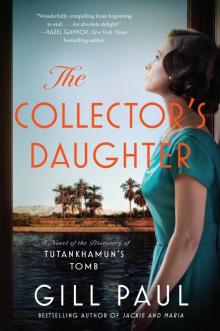 The Collector's Daughter
The Collector's Daughter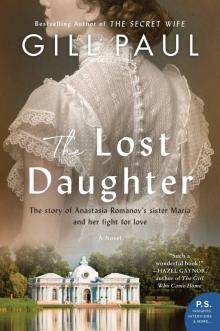 The Lost Daughter
The Lost Daughter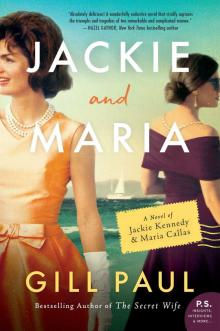 Jackie and Maria
Jackie and Maria The Affair
The Affair Love...Maybe
Love...Maybe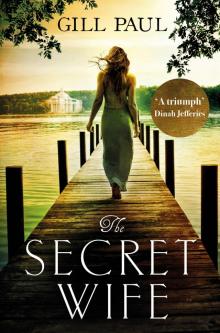 The Secret Wife
The Secret Wife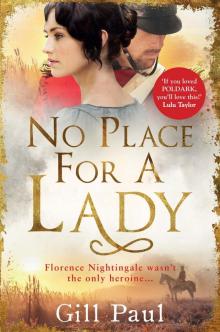 No Place For a Lady
No Place For a Lady Another Woman’s Husband
Another Woman’s Husband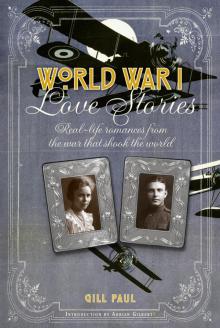 World War I Love Stories
World War I Love Stories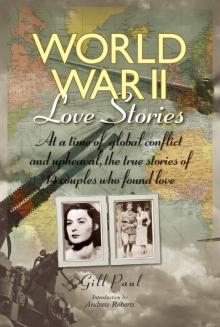 World War II Love Stories
World War II Love Stories